“Free-roaming horses and burros are not considered endangered species. These animals reproduce quickly with herds increasing by up to 20% per year – herds can double in size every 3-4 years. Also, as a species, there are millions of these animals domesticated by man. Selected individuals could easily be turned loose and the herds would reestablish very quickly. Under population is not the current problem.”

Photo of BLM Poster at Palomino Valley Wild Horse & Burro Holding Facility, 2007.
Courtesy of Wild Horse Spirit, Ltd.
The four-year grand jury investigation of the Wild Horse & Burro Program and the over 3,000 pieces of evidence it accumulated that was slammed shut in 1996 (without any of this evidence ever being heard) is often referred to in wild horse circles as “Del Rio”.
Does anyone remember what the final straw was that broke the back of the Del Rio grand jury's investigation? It was a subpoena issued to BLM demanding an “inventory” of a 1,200 capacity long-term holding facility in Osasge County, OK, - a legal subpoena BLM refused to grant.
Let me repeat this so it is crystal clear…
Because a subpoena demanded an accounting of the number of wild horses in a BLM holding facility, the BLM successfully shut down a grand jury investigation of the United States of America rather than comply and allow independent law enforcement to verify the number of wild horses BLM said they were holding in the facility. (To be fair, this wasn’t the only reason BLM didn’t want the mountain of evidence assembled against them to ever be heard but it was the subpoena that forced their hand to dismantle the investigation through a variety of tactics).
The key word was inventory - meaning numbers - and anyone who takes a little time to research this issue quickly realizes this is a “numbers game”. As the lives of America’s wild horses and burros continue to tip precariously closer to execution and/or slaughter, the future they are facing is a result of only one thing - numbers.
Whether discussing the financial numbers, the numbers in long and short term holding, the numbers on the range, population censuses numbers, reproduction numbers, forage or water utilization numbers or the allowed population numbers BLM has set in relation to the “numbers” of everything else in the thriving natural ecological balance, every act, decision and proposal finds its roots in numbers. Yet despite this, why do the numbers so often fail to add up?
BLM leans heavily on numbers to manage our wild herds, a management that has resulted in the current crisis of over 30,000 American mustangs and burros possibly facing their untimely deaths. But when confronted with the wide discrepancies and gapping holes serious scrutiny reveals, they often answer with what I call “no answers”; bureaucratic double-talk that never actually answers the questions.
If pressed, they can line court halls and committee meetings with experts to testify on their behalf, counting on most advocates and members of the public having little stomach for the numbers thrown out, much of which could be challenged, refuted or disproved if those testifying for wild horses and burros were given a fair shake.
However, our current legal system defers to the “experts” if all evidence given is equal. Such was the case when “Dances With Wolves” author Michael Blake commissioned an independent census in 1992 conducted by the Public Lands Resource Council of the wild horse population in Nevada.
The independent census only found 8,300 wild horses actually on the range even while BLM continued to report Nevada was home to 33,000 wild horses. Dr. Richard McClellan, spokesperson for the Pubic Lands Resources Council stated, “Somebody is lying about the number of wild horses in America”. Click Here to view full story.
While BLM’s expertise on counting (or should I say reporting) wild horse and burro populations stood up back then, today BLM claims much of their funny numbers are a result of the erroneous census methods practiced for the last 40 years, despite using peer-reviewed methods approved by the National Academy of Science and verified in the Journal of Wildlife Management 55(4):641-648 in 1991, both of which maintain BLMs census methods are accurate by a margin of +/- 15% in most instances. Click Here to view.
The new drumbeat of inadequate counting techniques has been recently used to explain why 700 wild horses showed up in the Jackson Mountains or disappeared out of Sheldon National Wildlife Refuge. It has been used to explain why removing almost 80,000 wild horses over the last 8 years failed to finally get wild horse and burro populations under BLM’s national allowable management level and why there continues to be a “perpetual 33,000 wild horses and burros” still left on the range demanding BLM continue the removals - only to be “disposed of” in all those un-inventoried long-term holding facilities.
It was used to explain why BLM Wyoming unrelentingly went after the Adobe Town and Salt Wells Creek horses as each round up only brought new rounds of BLM announcements that more round ups were being scheduled. Still BLM continues to tell the public and the media they are working on new census methods to finally resolve this issue through “better techniques”.
Yet behind the scenes, the last report the U.S. Geological Survey (USGS) issued regarding those very same techniques BLM is referring too stated, the “adjustment factor” is currently projected to be +18.7% to the actual censused population. (1) This is only 3.7% more than the methods BLM has already been using. (It is interesting to note that unlike USGS’s results, BLM’s current method actually acknowledges their method can over count horses too!).
In true irony, these “new” census techniques involve flying fixed wing aircrafts in a grid pattern over the area being counted. When the independent census was conduct by Michael Blake and the Public Lands Resource Council back in 1992, BLM argued the independent census lacked “accuracy” due to its use of a fixed wing aircraft flying in a grid pattern. Back then, BLM maintained using a helicopter provided a more accurate method.
The Government Accountability Office’s (GAO) recent report on the Wild Horse & Burro Program firmly asserted BLM always undercounted wild horse and burro herds, never over counted them, an assertion they failed to present a single shred of scientific proof or references to support - with the notable exception of the GAO using the surveys they sent to BLM during their ?investigation? as “proof” this is fact.
What makes this new drumbeat exceptionally odd is, Australian studies on counting wild horses through aerial census determined every time wild horses were counted, they were always over counted, not undercounted, due to their running to and fro from the aircraft disturbances. (2)
It’s also rather odd that no one seems too concerned with the fact that the issue of woefully inaccurate aerial census methods only applies to wild horses and burros. When was the last time anyone heard hunters screaming that wildlife populations were being under or over counted? Everyone seems reasonably content in the knowledge the wildlife populations reported by state Fish & Game Departments are accurate enough to provide stable management of those species – it’s only counting wild horses and burros that seems to be so incredibly elusive.
Can anyone tell me why Fish & Game can report with reasonable confidence that the elk populations in five states totaled 675-700k elk, a population estimation gap of 25,000 equal to less than a 5% margin of error while counting wild horses and burros is now estimating a margin of error hovering near 20% - despite being one of the biggest animals on the North American Continent?
If one tries to bring up these points, BLM or other experts will often switch the focus to reproduction rates instead, another numbers game with little evidence to support much of what is said.
The BLM uses a “standard” 20% reproduction rate applied to all wild horse and burro populations but how are other wildlife population reproduction rates calculated? Do wildlife agencies also apply a “standard” reproduction rate for the species they manage to come up with their population figures? The answer is no, they don’t.
As near as I can figure, those who track other large ungulates, a.k.a., big game species such as pronghorn antelope, elk, big horn sheep, etc. do an annual census of a population in a “hunt unit”, kind of like a Herd Management Area but on a larger scale.
Wildlife agencies do an aerial census to count populations in the hunt unit and then determine a sampling rate of adults to the number of newborns. For example, let’s say they are counting big horn sheep. They will break it down to, let’s say, 14 rams, 28 ewes, and 13 lambs for that year. By using this technique, they have a better idea of how the animals are doing based on the number of babies born that year and from these snapshots, they then multiply this sampling rate across the entire hunt unit to determine the total population.
While it is obvious that using a reasonably accurate population estimation technique is essential in sustainable wildlife management, those who manage hunting species are under a great deal of pressure to “get it right” as managers need to determine how many hunting tags they can issue without disrupting the population and causing it to decline.
The reason wildlife agencies use this kind of population estimation technique is, they know reproduction rates aren’t a constant, they fluctuate depending on the environment, the availability of resources (i.e., food and water) and that in good years, more babies are born than in bad. So far, it seems to be working pretty good for them…
Also, it’s not like BLM is unaware of this method either. In fact, BLM dusted it off to try and calm down Nevada hunters in 2003 when they were screaming at the Nevada Wildlife Commissioners regarding the perceived decline in mule deer populations by blaming “large numbers” of wild horses as the cause.
According to the The Animal Welfare Institute, BLM distributed a hand out to the Commissioners at their April 2003 meeting in efforts to try and ease concerns of wild horse populations causing further declines, which stated, “Census data suggests that continuing drought conditions are resulting in reduced reproductive rates for many wild horse herds throughout Nevada” and that, “Many of Nevada’s herd management areas (HMAs) are currently below appropriate management levels (AML) due to lower reproduction and the removal of excess horses since FY2000”. Click here to view.
For me, further substantiation of the issue of annual reproduction rates being tied to resource availability came from a Nevada resident that has monitored a herd for years. She told me, “no foals were born in 2003” (at least for that herd). That’s right - zip, zero, none – no foals.
So why doesn’t BLM apply this same method to wild horse and burro reproduction instead of this straight-across-the-board 20%?
If you go back and read the quote at the top of this post, notice the glaring discrepancies about reproduction rates. First, BLM states, “These animals reproduce quickly with herds increasing by up to 20% per year.” It clearly states, “by up to 20%”. Doesn’t this indicate BLM is acknowledging that 20% is the highest reproduction rate wild horses can achieve while simultaneously suggesting that reproduction rates can definitely be lower than 20% too?
But then BLM immediately follows this up by stating “herds can double in size every 3-4 years”. Well, in my book that translates to a 25% to 33% reproduction rate, not “up to 20%” like they originally stated. So which one is true?
In trying to find answers to these questions, I ran across a very interesting find in a BLM document courteously provided by BLM’s Battle Mountain Wild Horse & Burro Specialist Shawna Richardson. It is an extremely thorough report titled, “Pre-Close Out Report” compiled after the New Pass/Ravenswood wild horse round up conducted in November 2007. Check this out…
The following chart is an age class breakdown of the wild horses gathered during the round up. Now keep in mind, these numbers were based on all the wild horses gathered, not just the ones they released or shipped to holding facilities. I’m only going to list the age class structure up to six years old because records indicate the last time wild horses were removed in the New Pass/Ravenswood was 1999. Click Here to view report- full chart available on pg. 11.

Logic suggests going back six years would show a true age-class representation of what was born each year because BLM had yet to re-arrange these age classes due to removals disturbing the true numbers. I think these age class structures show the true rate wild horses were really reproducing at each year, just like the wildlife species reproduction techniques referenced above. (Note: They may also be reflecting a combined reproduction/mortality rate, meaning, a lot more wild horses may have died after they were born to drop each years age class so low, which would also refute BLM’s common assurance to the public that mortality rates for wild horses and burros are extremely low).
If the foals born in the spring of 2007 before the November round up are excluded, look how low those age classes are. 3.1%? 4.5%? 5.8%? Not a single year exceeding 13%? This would seem to indicate reproduction rates are a far cry from BLMs “standard” 20%, much less a 25% or 30% reproduction rate.
It’s also interesting to note that the New Pass/Ravenswood had more mares than studs – 56.6% mares vs. 43.2% studs, which would actually contribute to slightly higher reproduction rates than if the mare/stud ratio was equal or less mares than studs were present. (And then out of the blue, the 2007 spring foals shoot up to a 20.8% reproduction rate with the largest foaling increase of the whole six years happening right before the gather. What happened here? I don’t have an answer yet but couldn’t help wondering out loud…)
And what about the burros? In another BLM report received from BLMs Las Vegas Wild Horse & Burro Specialist Jerry Bertola regarding the Gold Butte Herd Management Area, an aerial census done between December 12-13, 2007, counted 80 burros but only 3 foals.
Only 3 foals?!? Since BLM just lumps in wild burro reproduction rates with their standard 20% wild horse reproduction rates, what are their true reproduction rates of wild burros if, out of 80 burros there were only 3 foals to be found? Click Here to view.
So what I’m getting at is, if a 20% reproduction rate is high and the method used in the Mustang & Burro report, which gave every possible advantage to BLMs numbers (i.e., such as allowing the first analysis to apply a 20% reproduction rate on almost the entire 2001 population which in turn affected every years analysis after that) and that method still found a range of 13,500 to 16,800 wild horses and burros still remaining nationwide as of February 28, 2008, what would the numbers look like if a 15%, a 10% or a 5.8% reproduction rate was applied as evidenced by the New Pass/Ravenswood age-structures?
BLM claims wild horses and burros are not an endangered species. That’s not what the numbers say…
So what about the truth of BLM’s other significant statement in the poster highlighted at the start of this article, when they were so quick to say, “Also, as a species, there are millions of these animals domesticated by man. Selected individuals could easily be turned loose and the herds would reestablish very quickly.”
BLM law enforcement ranger Lee Kilman seems to have a very different opinion of BLMs reassurances as he so clearly expressed to Idaho news reporters on February 5, 2009, during a recent story about dead horses being dropped off on public lands that had numerous references of how domesticated horses were unable to survive “in the wild”. Click Here to view the article and video in full. Here are a few quotes from BLM’s Ranger Kilman.
“Someone is leaving domestic horses on public lands, without a way for the animals to eat or survive”.
“The horses are domesticated and cannot fend for themselves in the wild”.
“A lot of these horses aren’t use to living in the wild and they are likely to starve.”
And what does all of this have to do with Del Rio?
If a subpoena was issued today to “inventory” the almost 33,000 wild horses BLM reports are now in holding versus the measly 1,200 of yesteryear, would BLM give the American people the same response? Would they again refuse to comply with a grand jury subpoena, which only asks to verify the wild horses and burros BLM reports are in holding are indeed - in holding?
If a truly independent census count was conducted today on America’s remaining free-roaming wild horse and burro populations after their massive cleansing campaign during the Bush years, could BLM continue to plaster posters at their holding facilities professing wild horses and burros are “not an endangered species”? And if an independent census found BLM had removed most of America’s wild horses and burros after all, can we really just dump domestic horses on public lands to replace the American mustang and burro and their unique adaptations?
Or would a serious, independent "inventory" of the numbers break Del Rio’s back again and show the American public what BLM really thinks of the laws or our herds they are charged with to protect and preserve....
(1) Lubow, B.C., and J.I. Ransom. 2007. Aerial population estimates of wild horses (Equus caballus) in Adobe Town and Salt Wells Creek Herd Management Areas using an integrated simultaneous double-cout and sightability bias correction technique: U.S. Geological Survey Open File Report 2007-1274. 13 p., available at: http://www.fort.usgs.gov/Products/Publications/pub_abstract.asp?PubId=22003
(2) Advances in New Zealand mammalogy 1990-2000: Feral Horse, Clare J. Veltman, Journal of The Royal Society of New Zealand, Volume 31, 2001, pg.219-224
Courtesy of Wild Horse Spirit, Ltd.
The four-year grand jury investigation of the Wild Horse & Burro Program and the over 3,000 pieces of evidence it accumulated that was slammed shut in 1996 (without any of this evidence ever being heard) is often referred to in wild horse circles as “Del Rio”.
Does anyone remember what the final straw was that broke the back of the Del Rio grand jury's investigation? It was a subpoena issued to BLM demanding an “inventory” of a 1,200 capacity long-term holding facility in Osasge County, OK, - a legal subpoena BLM refused to grant.
Let me repeat this so it is crystal clear…
Because a subpoena demanded an accounting of the number of wild horses in a BLM holding facility, the BLM successfully shut down a grand jury investigation of the United States of America rather than comply and allow independent law enforcement to verify the number of wild horses BLM said they were holding in the facility. (To be fair, this wasn’t the only reason BLM didn’t want the mountain of evidence assembled against them to ever be heard but it was the subpoena that forced their hand to dismantle the investigation through a variety of tactics).
The key word was inventory - meaning numbers - and anyone who takes a little time to research this issue quickly realizes this is a “numbers game”. As the lives of America’s wild horses and burros continue to tip precariously closer to execution and/or slaughter, the future they are facing is a result of only one thing - numbers.
Whether discussing the financial numbers, the numbers in long and short term holding, the numbers on the range, population censuses numbers, reproduction numbers, forage or water utilization numbers or the allowed population numbers BLM has set in relation to the “numbers” of everything else in the thriving natural ecological balance, every act, decision and proposal finds its roots in numbers. Yet despite this, why do the numbers so often fail to add up?
BLM leans heavily on numbers to manage our wild herds, a management that has resulted in the current crisis of over 30,000 American mustangs and burros possibly facing their untimely deaths. But when confronted with the wide discrepancies and gapping holes serious scrutiny reveals, they often answer with what I call “no answers”; bureaucratic double-talk that never actually answers the questions.
If pressed, they can line court halls and committee meetings with experts to testify on their behalf, counting on most advocates and members of the public having little stomach for the numbers thrown out, much of which could be challenged, refuted or disproved if those testifying for wild horses and burros were given a fair shake.
However, our current legal system defers to the “experts” if all evidence given is equal. Such was the case when “Dances With Wolves” author Michael Blake commissioned an independent census in 1992 conducted by the Public Lands Resource Council of the wild horse population in Nevada.
The independent census only found 8,300 wild horses actually on the range even while BLM continued to report Nevada was home to 33,000 wild horses. Dr. Richard McClellan, spokesperson for the Pubic Lands Resources Council stated, “Somebody is lying about the number of wild horses in America”. Click Here to view full story.
While BLM’s expertise on counting (or should I say reporting) wild horse and burro populations stood up back then, today BLM claims much of their funny numbers are a result of the erroneous census methods practiced for the last 40 years, despite using peer-reviewed methods approved by the National Academy of Science and verified in the Journal of Wildlife Management 55(4):641-648 in 1991, both of which maintain BLMs census methods are accurate by a margin of +/- 15% in most instances. Click Here to view.
The new drumbeat of inadequate counting techniques has been recently used to explain why 700 wild horses showed up in the Jackson Mountains or disappeared out of Sheldon National Wildlife Refuge. It has been used to explain why removing almost 80,000 wild horses over the last 8 years failed to finally get wild horse and burro populations under BLM’s national allowable management level and why there continues to be a “perpetual 33,000 wild horses and burros” still left on the range demanding BLM continue the removals - only to be “disposed of” in all those un-inventoried long-term holding facilities.
It was used to explain why BLM Wyoming unrelentingly went after the Adobe Town and Salt Wells Creek horses as each round up only brought new rounds of BLM announcements that more round ups were being scheduled. Still BLM continues to tell the public and the media they are working on new census methods to finally resolve this issue through “better techniques”.
Yet behind the scenes, the last report the U.S. Geological Survey (USGS) issued regarding those very same techniques BLM is referring too stated, the “adjustment factor” is currently projected to be +18.7% to the actual censused population. (1) This is only 3.7% more than the methods BLM has already been using. (It is interesting to note that unlike USGS’s results, BLM’s current method actually acknowledges their method can over count horses too!).
In true irony, these “new” census techniques involve flying fixed wing aircrafts in a grid pattern over the area being counted. When the independent census was conduct by Michael Blake and the Public Lands Resource Council back in 1992, BLM argued the independent census lacked “accuracy” due to its use of a fixed wing aircraft flying in a grid pattern. Back then, BLM maintained using a helicopter provided a more accurate method.
The Government Accountability Office’s (GAO) recent report on the Wild Horse & Burro Program firmly asserted BLM always undercounted wild horse and burro herds, never over counted them, an assertion they failed to present a single shred of scientific proof or references to support - with the notable exception of the GAO using the surveys they sent to BLM during their ?investigation? as “proof” this is fact.
What makes this new drumbeat exceptionally odd is, Australian studies on counting wild horses through aerial census determined every time wild horses were counted, they were always over counted, not undercounted, due to their running to and fro from the aircraft disturbances. (2)
It’s also rather odd that no one seems too concerned with the fact that the issue of woefully inaccurate aerial census methods only applies to wild horses and burros. When was the last time anyone heard hunters screaming that wildlife populations were being under or over counted? Everyone seems reasonably content in the knowledge the wildlife populations reported by state Fish & Game Departments are accurate enough to provide stable management of those species – it’s only counting wild horses and burros that seems to be so incredibly elusive.
Can anyone tell me why Fish & Game can report with reasonable confidence that the elk populations in five states totaled 675-700k elk, a population estimation gap of 25,000 equal to less than a 5% margin of error while counting wild horses and burros is now estimating a margin of error hovering near 20% - despite being one of the biggest animals on the North American Continent?
If one tries to bring up these points, BLM or other experts will often switch the focus to reproduction rates instead, another numbers game with little evidence to support much of what is said.
The BLM uses a “standard” 20% reproduction rate applied to all wild horse and burro populations but how are other wildlife population reproduction rates calculated? Do wildlife agencies also apply a “standard” reproduction rate for the species they manage to come up with their population figures? The answer is no, they don’t.
As near as I can figure, those who track other large ungulates, a.k.a., big game species such as pronghorn antelope, elk, big horn sheep, etc. do an annual census of a population in a “hunt unit”, kind of like a Herd Management Area but on a larger scale.
Wildlife agencies do an aerial census to count populations in the hunt unit and then determine a sampling rate of adults to the number of newborns. For example, let’s say they are counting big horn sheep. They will break it down to, let’s say, 14 rams, 28 ewes, and 13 lambs for that year. By using this technique, they have a better idea of how the animals are doing based on the number of babies born that year and from these snapshots, they then multiply this sampling rate across the entire hunt unit to determine the total population.
While it is obvious that using a reasonably accurate population estimation technique is essential in sustainable wildlife management, those who manage hunting species are under a great deal of pressure to “get it right” as managers need to determine how many hunting tags they can issue without disrupting the population and causing it to decline.
The reason wildlife agencies use this kind of population estimation technique is, they know reproduction rates aren’t a constant, they fluctuate depending on the environment, the availability of resources (i.e., food and water) and that in good years, more babies are born than in bad. So far, it seems to be working pretty good for them…
Also, it’s not like BLM is unaware of this method either. In fact, BLM dusted it off to try and calm down Nevada hunters in 2003 when they were screaming at the Nevada Wildlife Commissioners regarding the perceived decline in mule deer populations by blaming “large numbers” of wild horses as the cause.
According to the The Animal Welfare Institute, BLM distributed a hand out to the Commissioners at their April 2003 meeting in efforts to try and ease concerns of wild horse populations causing further declines, which stated, “Census data suggests that continuing drought conditions are resulting in reduced reproductive rates for many wild horse herds throughout Nevada” and that, “Many of Nevada’s herd management areas (HMAs) are currently below appropriate management levels (AML) due to lower reproduction and the removal of excess horses since FY2000”. Click here to view.
For me, further substantiation of the issue of annual reproduction rates being tied to resource availability came from a Nevada resident that has monitored a herd for years. She told me, “no foals were born in 2003” (at least for that herd). That’s right - zip, zero, none – no foals.
So why doesn’t BLM apply this same method to wild horse and burro reproduction instead of this straight-across-the-board 20%?
If you go back and read the quote at the top of this post, notice the glaring discrepancies about reproduction rates. First, BLM states, “These animals reproduce quickly with herds increasing by up to 20% per year.” It clearly states, “by up to 20%”. Doesn’t this indicate BLM is acknowledging that 20% is the highest reproduction rate wild horses can achieve while simultaneously suggesting that reproduction rates can definitely be lower than 20% too?
But then BLM immediately follows this up by stating “herds can double in size every 3-4 years”. Well, in my book that translates to a 25% to 33% reproduction rate, not “up to 20%” like they originally stated. So which one is true?
In trying to find answers to these questions, I ran across a very interesting find in a BLM document courteously provided by BLM’s Battle Mountain Wild Horse & Burro Specialist Shawna Richardson. It is an extremely thorough report titled, “Pre-Close Out Report” compiled after the New Pass/Ravenswood wild horse round up conducted in November 2007. Check this out…
The following chart is an age class breakdown of the wild horses gathered during the round up. Now keep in mind, these numbers were based on all the wild horses gathered, not just the ones they released or shipped to holding facilities. I’m only going to list the age class structure up to six years old because records indicate the last time wild horses were removed in the New Pass/Ravenswood was 1999. Click Here to view report- full chart available on pg. 11.

Logic suggests going back six years would show a true age-class representation of what was born each year because BLM had yet to re-arrange these age classes due to removals disturbing the true numbers. I think these age class structures show the true rate wild horses were really reproducing at each year, just like the wildlife species reproduction techniques referenced above. (Note: They may also be reflecting a combined reproduction/mortality rate, meaning, a lot more wild horses may have died after they were born to drop each years age class so low, which would also refute BLM’s common assurance to the public that mortality rates for wild horses and burros are extremely low).
If the foals born in the spring of 2007 before the November round up are excluded, look how low those age classes are. 3.1%? 4.5%? 5.8%? Not a single year exceeding 13%? This would seem to indicate reproduction rates are a far cry from BLMs “standard” 20%, much less a 25% or 30% reproduction rate.
It’s also interesting to note that the New Pass/Ravenswood had more mares than studs – 56.6% mares vs. 43.2% studs, which would actually contribute to slightly higher reproduction rates than if the mare/stud ratio was equal or less mares than studs were present. (And then out of the blue, the 2007 spring foals shoot up to a 20.8% reproduction rate with the largest foaling increase of the whole six years happening right before the gather. What happened here? I don’t have an answer yet but couldn’t help wondering out loud…)
And what about the burros? In another BLM report received from BLMs Las Vegas Wild Horse & Burro Specialist Jerry Bertola regarding the Gold Butte Herd Management Area, an aerial census done between December 12-13, 2007, counted 80 burros but only 3 foals.
Only 3 foals?!? Since BLM just lumps in wild burro reproduction rates with their standard 20% wild horse reproduction rates, what are their true reproduction rates of wild burros if, out of 80 burros there were only 3 foals to be found? Click Here to view.
So what I’m getting at is, if a 20% reproduction rate is high and the method used in the Mustang & Burro report, which gave every possible advantage to BLMs numbers (i.e., such as allowing the first analysis to apply a 20% reproduction rate on almost the entire 2001 population which in turn affected every years analysis after that) and that method still found a range of 13,500 to 16,800 wild horses and burros still remaining nationwide as of February 28, 2008, what would the numbers look like if a 15%, a 10% or a 5.8% reproduction rate was applied as evidenced by the New Pass/Ravenswood age-structures?
BLM claims wild horses and burros are not an endangered species. That’s not what the numbers say…
So what about the truth of BLM’s other significant statement in the poster highlighted at the start of this article, when they were so quick to say, “Also, as a species, there are millions of these animals domesticated by man. Selected individuals could easily be turned loose and the herds would reestablish very quickly.”
BLM law enforcement ranger Lee Kilman seems to have a very different opinion of BLMs reassurances as he so clearly expressed to Idaho news reporters on February 5, 2009, during a recent story about dead horses being dropped off on public lands that had numerous references of how domesticated horses were unable to survive “in the wild”. Click Here to view the article and video in full. Here are a few quotes from BLM’s Ranger Kilman.
“Someone is leaving domestic horses on public lands, without a way for the animals to eat or survive”.
“The horses are domesticated and cannot fend for themselves in the wild”.
“A lot of these horses aren’t use to living in the wild and they are likely to starve.”
And what does all of this have to do with Del Rio?
If a subpoena was issued today to “inventory” the almost 33,000 wild horses BLM reports are now in holding versus the measly 1,200 of yesteryear, would BLM give the American people the same response? Would they again refuse to comply with a grand jury subpoena, which only asks to verify the wild horses and burros BLM reports are in holding are indeed - in holding?
If a truly independent census count was conducted today on America’s remaining free-roaming wild horse and burro populations after their massive cleansing campaign during the Bush years, could BLM continue to plaster posters at their holding facilities professing wild horses and burros are “not an endangered species”? And if an independent census found BLM had removed most of America’s wild horses and burros after all, can we really just dump domestic horses on public lands to replace the American mustang and burro and their unique adaptations?
Or would a serious, independent "inventory" of the numbers break Del Rio’s back again and show the American public what BLM really thinks of the laws or our herds they are charged with to protect and preserve....
(1) Lubow, B.C., and J.I. Ransom. 2007. Aerial population estimates of wild horses (Equus caballus) in Adobe Town and Salt Wells Creek Herd Management Areas using an integrated simultaneous double-cout and sightability bias correction technique: U.S. Geological Survey Open File Report 2007-1274. 13 p., available at: http://www.fort.usgs.gov/Products/Publications/pub_abstract.asp?PubId=22003
(2) Advances in New Zealand mammalogy 1990-2000: Feral Horse, Clare J. Veltman, Journal of The Royal Society of New Zealand, Volume 31, 2001, pg.219-224

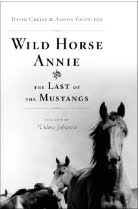



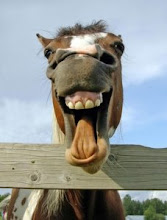




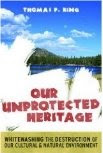



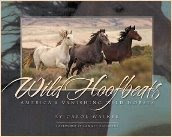




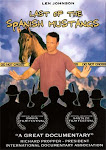





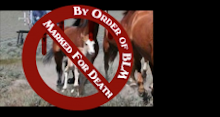

2 comments:
Hi Cindy,
I published a lot of your material on my site as Valerie suggested. I also have the committee hearing downloaded and converted to an .mp3 as those resources don't stick around that long on Congressional servers. You can find it on this page:
http://www.manesandtailsorganization.org/mustangs.htm
I applaud you for your watchful eye! We must get Senate Sponsors for this bill, as well as the others.
Be well,
Elle from Manes and Tails Organization
Horse Breeding is not easily predictable within breeds. Genetics and traits passed down within horses isn't well enough understood at this time to accurately predict the outcomes of horse breeding.
Post a Comment